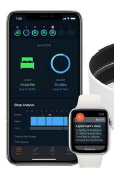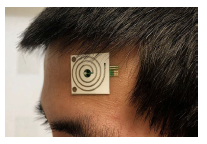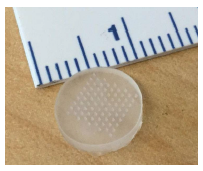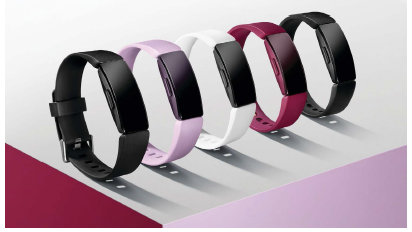First Patient Begins CVS Trial With Home Dialysis Machine
Trend Watch: Telehealth Developments: At-home dialysis; skin patches for melanoma treatment; sweat monitoring, and norovirus detection.
 In August, the first patient involved in a clinical trial for a new CVS-funded home hemodialysis machine began treatment at home, according to an update at the Innovations in Dialysis: Expediting Advances Symposium.
In August, the first patient involved in a clinical trial for a new CVS-funded home hemodialysis machine began treatment at home, according to an update at the Innovations in Dialysis: Expediting Advances Symposium.
CVS Health initiated the clinical trial designed to evaluate the safety and efficacy of the HemoCare Hemodialysis System for administration of home hemodialysis earlier this year. The clinical trial of up to 70 patients is being conducted at up to 10 sites in the United States. The innovative device includes safety features and is designed to make home hemodialysis simple for patients. Home hemodialysis helps facilitate longer, more frequent dialysis treatments as compared with in-center treatments, and published clinical research has found that longer, more frequent hemodialysis treatments result in better health outcomes in appropriate patient populations.
During the trial, investigators will measure the safety and performance of the HemoCare Hemodialysis System. In the initial phase of the trial conducted at medical facilities, clinical study subjects and their caregivers will receive training on the system and will then transition to home-based dialysis.
Primary study endpoints include adverse events as well as regular tests to measure the dose efficacy of dialysis delivered by the device.
“We’re working now to change the kidney care paradigm by bringing to market programs and tools to improve early detection of kidney disease and provide comprehensive education and support to help delay the transition to dialysis," says Alan Lotvin, M.D., executive VP and chief transformation officer, CVS Health, The HemoCare Hemodialysis System was developed in collaboration with DEKA Research & Development.
Eli Lilly Studies Feasibility of Data From iPhones and Apple Watches to Detect Signs Of Dementia
 Initial results from a study conducted by Eli Lilly, Evidation Health, and Apple showed that an iPhone, Apple Watch, iPad, and the Beddit sleep monitoring device, in combination with digital apps, may be able to differentiate people with mild cognitive impairment and mild Alzheimer’s disease dementia.
Initial results from a study conducted by Eli Lilly, Evidation Health, and Apple showed that an iPhone, Apple Watch, iPad, and the Beddit sleep monitoring device, in combination with digital apps, may be able to differentiate people with mild cognitive impairment and mild Alzheimer’s disease dementia.
The early-stage study took place over 12 weeks and included both an 82-person healthy control group and 31 individuals with varying stages of cognitive decline and dementia.
The study is the first to publicly link Apple and Eli Lilly, an indication that Apple’s health team is investing in deep medical research with traditional pharmaceutical players.
Those who participated were asked to avoid taking medications that might impact the results, and each received three Apple gadgets: an iPhone, Apple Watch, and Beddit sleep tracker.
The authors found that people with symptoms of cognitive decline typed more slowly, typed less regularly, and sent fewer text messages than healthy participants. They also have a greater reliance on support apps and are less inclined to fill out surveys. Still, the researchers said there are limitations to the study, which didn’t draw any long-term conclusions because more analysis is needed.
There’s a risk of presenting results to patients because of the increased anxiety it can cause. Plus, the authors write, there’s not much people can do to stem the cognitive decline.
UC Berkeley has Prototypes of Next-Gen Wearables
 Researchers at the University of California, Berkeley, have developed wearable sensors that can detect the individual components in a person’s sweat.
Researchers at the University of California, Berkeley, have developed wearable sensors that can detect the individual components in a person’s sweat.
Testing sweat [chloride ion] concentration is the gold standard for diagnosing cystic fibrosis, and monitoring sweating behavior has been a clinical practice for assessment of autonomic function. Sweat alcohol levels can indicate blood alcohol levels.
Beyond alcohol, other chemicals, toxins, and contaminants — such as heavy metals and drugs — introduced into the body but not natively produced, are often excreted in sweat.
The team’s new sweat sensor design will be rapidly manufactured using a “roll-to-roll" processing technique that makes it easy to print sensors onto a sheet of plastic. Its creators liken this to printing words onto newspaper. The sensor can monitor sweat rate, along with the electrolytes and metabolites contained within sweat. It does this using a spiraling microscopic tube, or microfluidic, which wicks sweat from the skin. Measuring how quickly the sweat moves through the microfluidic makes it possible to determine how much a person is sweating. The microfluidics are also kitted out with chemical sensors for detecting the components of sweat, such as potassium, sodium, and glucose.
The goal is to continue using the sensors in large-scale human subject studies to explore how sweat parameters relate to the state of the body across athletic and medical applications.
A paper describing the work was recently published in the journal Science Advances.
“Going forward, our goal is to continue using our sensors in large-scale human subject studies to explore how sweat parameters relate to the state of the body across athletic and medical applications," says Ali Javey, a professor of electrical engineering and computer science at UC Berkeley. “In parallel, we have also shown in other papers the promise of this technology for drug monitoring and heavy metals."
New Skin Patch Developed to Deliver Vaccine to Treat Melanoma
 A team of MIT researchers created a new skin patch that can deliver medication to fight cancer. The fast-acting skin patch, tested in mice and human patients, efficiently and painlessly delivers medication that attacks melanoma cells. The patch is fitted with microneedles and can administer medication in a very short time.
A team of MIT researchers created a new skin patch that can deliver medication to fight cancer. The fast-acting skin patch, tested in mice and human patients, efficiently and painlessly delivers medication that attacks melanoma cells. The patch is fitted with microneedles and can administer medication in a very short time.
The patch is made through a process called layer-by-layer coating that allows it to quickly inject drugs using a new pH-responsive polymer with two parts.
Ultimately, the team believes the patch can be used as an effective treatment for other cancers.
Fitbit Collaborates with Singapore’s Health Promotion Board
 Fitbit is collaborating with Singapore’s Health Promotion Board (HPB) on a healthy population project in support of Singapore’s Smart Nation initiative. The HPB is Singapore’s government agency that implements policy and programs to improve the nation’s health. This is Fitbit’s first major integration of a digital health platform and wearables into a national public health program globally. The initiative, named Live Healthy SG, was uniquely designed for Singapore by Fitbit and the HPB to harness technology, behavior insights, and analytics to help Singaporeans get healthier through meaningful and sustained behavior change. Live Healthy SG will engage people of all ages and levels of health using Fitbit devices and its new premium service, which is launching to consumers in select markets around the world this fall.
Fitbit is collaborating with Singapore’s Health Promotion Board (HPB) on a healthy population project in support of Singapore’s Smart Nation initiative. The HPB is Singapore’s government agency that implements policy and programs to improve the nation’s health. This is Fitbit’s first major integration of a digital health platform and wearables into a national public health program globally. The initiative, named Live Healthy SG, was uniquely designed for Singapore by Fitbit and the HPB to harness technology, behavior insights, and analytics to help Singaporeans get healthier through meaningful and sustained behavior change. Live Healthy SG will engage people of all ages and levels of health using Fitbit devices and its new premium service, which is launching to consumers in select markets around the world this fall.
Live Healthy SG will leverage the full Fitbit ecosystem of wearable devices, software, and services, including programs, guidance, and individual one-to-one health coaching that will be offered through the new premium service. Participants will receive a dynamic and personalized experience, helping to motivate them to adopt healthier habits and achieve better outcomes in the areas of physical activity, sleep, nutrition, and emotional well-being.
The program will officially go live in late October 2019. Participants who enroll in and commit to one year of the Fitbit premium service will receive a Fitbit Inspire HR at no cost. In addition to driving positive lifestyle changes in individuals, the program will serve as a resource that provides detailed population insights to inform future health programs. This enables the HPB to explore other opportunities in precision public health, providing interventions to the right population at the right time.
A Smartphone App Can Detect Tiny Amounts of Norovirus in Water
A smartphone app can detect signs of norovirus, the most common cause of gastroenteritis. Jeong-Yeol Yoon and his colleagues at the University of Arizona built the system using a microscope attachment for a smartphone and a separate light source.
The technique is sensitive enough to detect as little as 10 attograms (10−18 grams) of norovirus per milliliter in water, which is six orders of magnitude better than other portable detectors, Yoon says. As few as tens of norovirus particles are enough to make people sick, he adds.
To test for norovirus, the team added water samples to a paper chip that contains tiny beads of fluorescent polystyrene. These beads have antibodies against norovirus on their surface. When particles of the virus are present, they bind to multiple beads, clumping together.
“Norovirus particles are too small to be imaged by a smartphone microscope, and so are antibodies," Yoon says. “But when you have two or three or more of these beads joined together, that indicates that the norovirus is there, causing the beads to aggregate."
When viewed through the smartphone microscope, the clumps produce a larger fluorescence. An app on the smartphone analyses the number of lit pixels it sees, converting that into a count of norovirus particles. Detecting small amounts of norovirus in food or water usually involves replicating viral DNA for sequencing, a process that takes several hours and can only be done in a laboratory.
The team is using the portable technique to monitor groundwater sources in Tucson, Arizona. It enables them to test water sources directly instead of bringing samples back to a lab.
In the future, the team hopes to develop methods for detecting norovirus infections in patients even earlier, and to expand their smartphone monitoring platform to detect other hazards, such as potentially cancer-causing chemicals. They also plan to spread the platform’s use across the globe, fighting and detecting far-reaching diseases with tools that are just as widespread.
Norovirus can spread quickly through a community via its water supply. It causes about 200,000 deaths globally each year. This rapid, low-cost water quality monitoring technology could be a transformational tool for reducing both local and global disease burden.
The National Science Foundation Water and Environmental Technology Center at the UA and Tucson Water both provided funding. The research was presented at a national meeting of the American Chemical Society in San Diego.(PV)


















